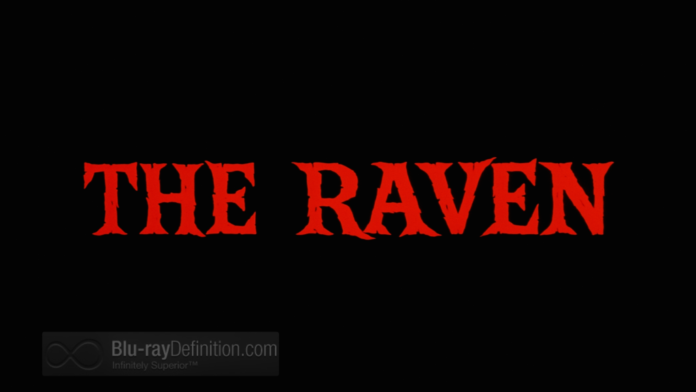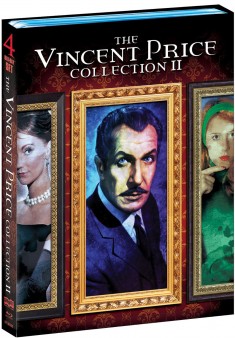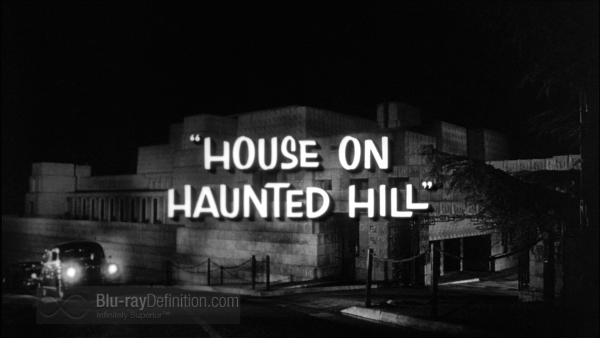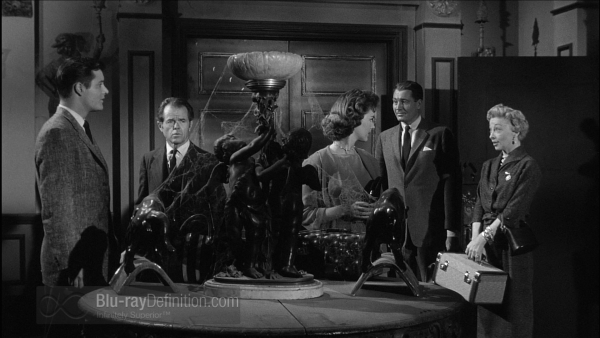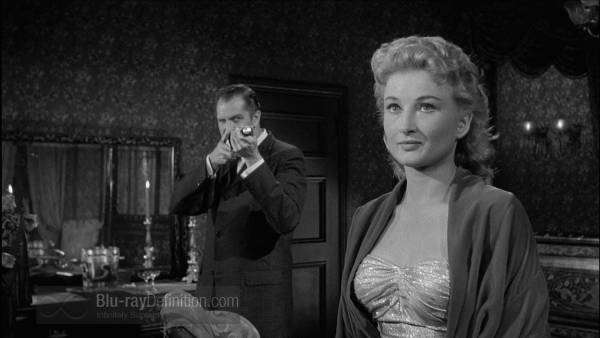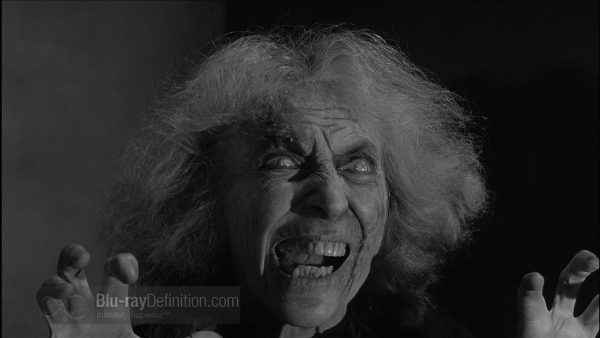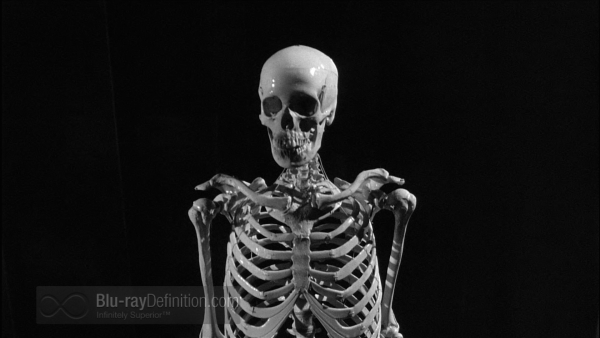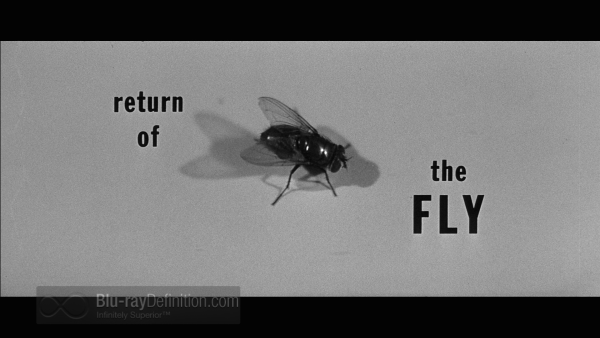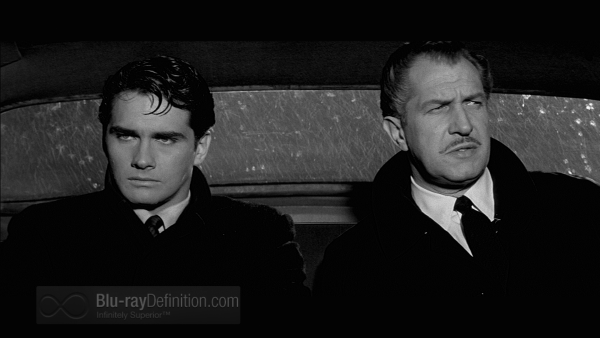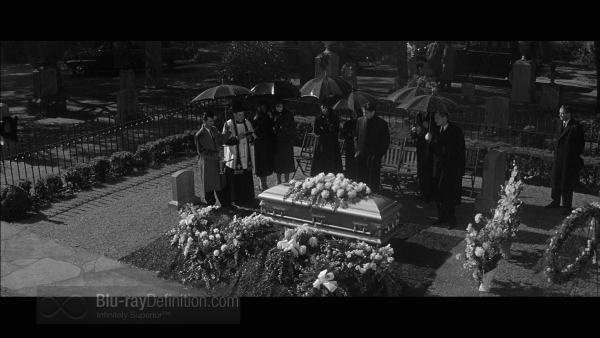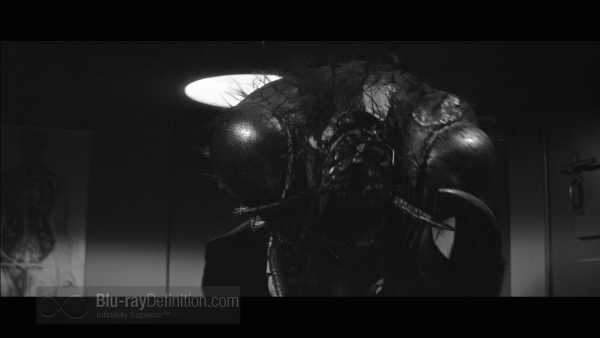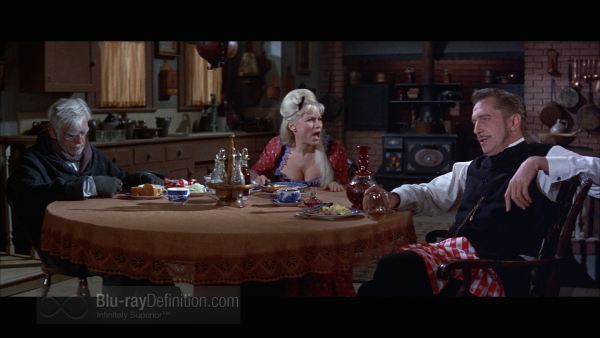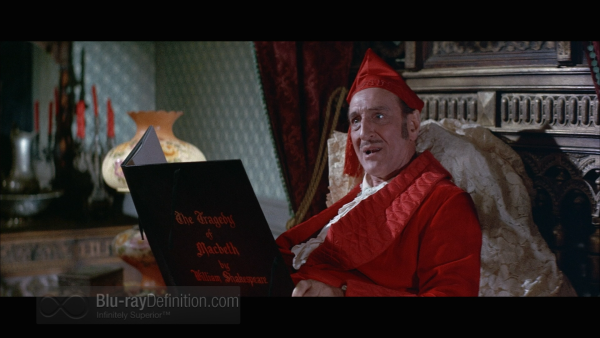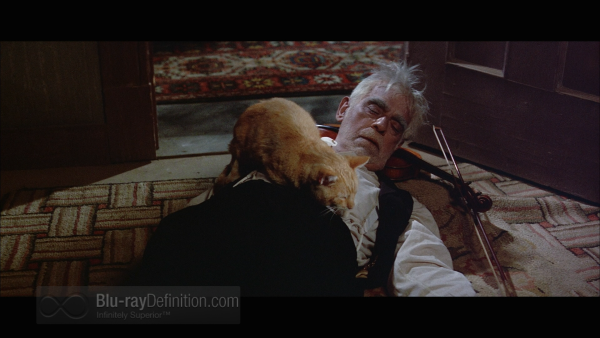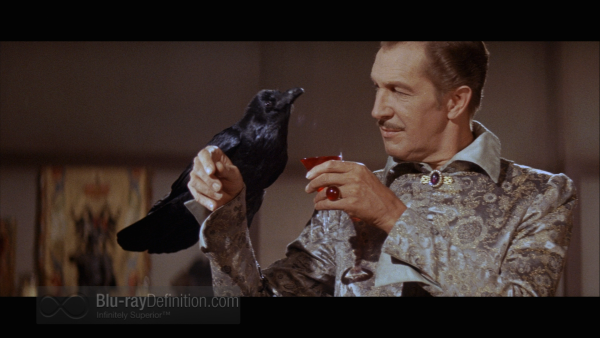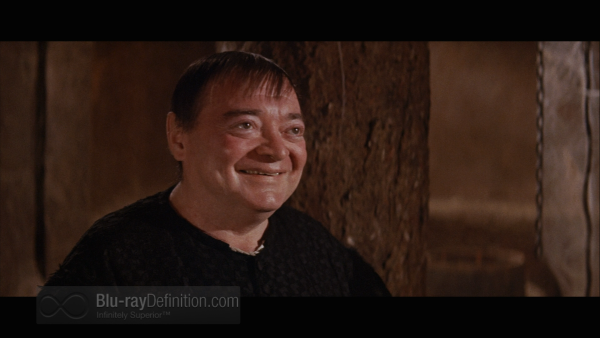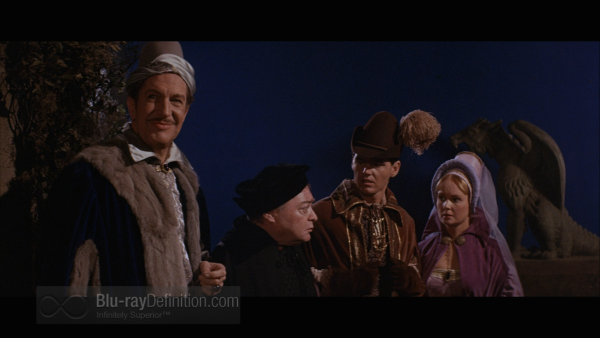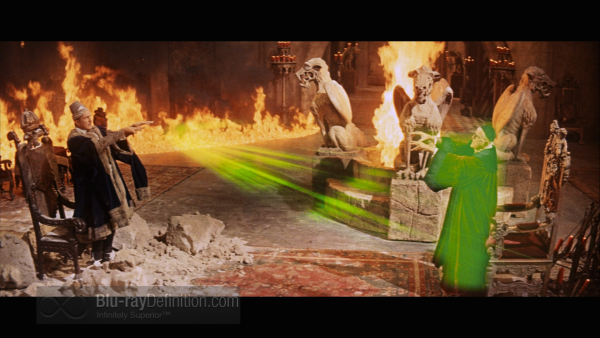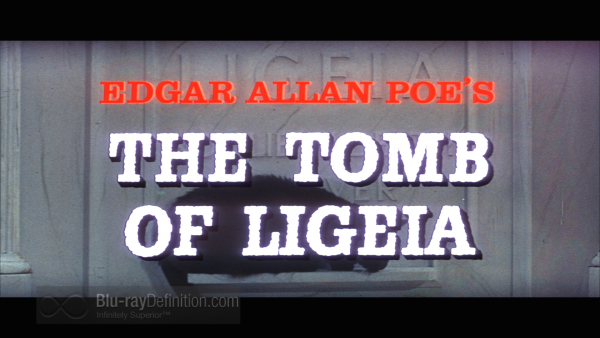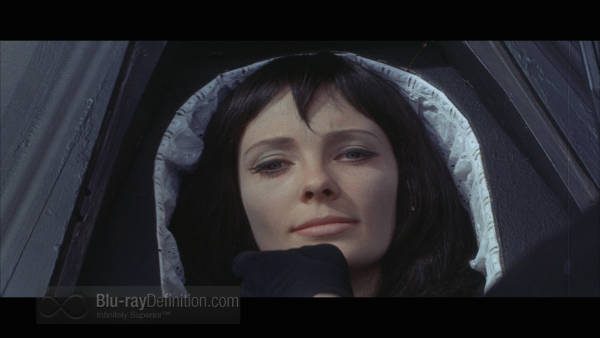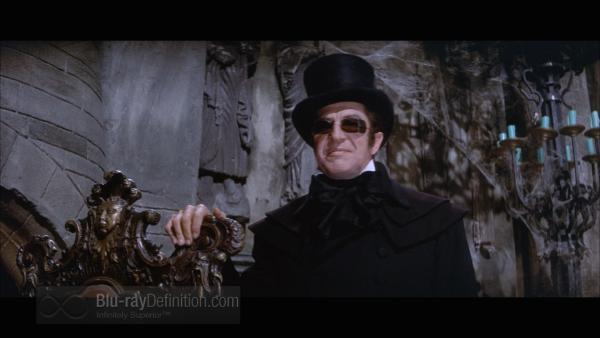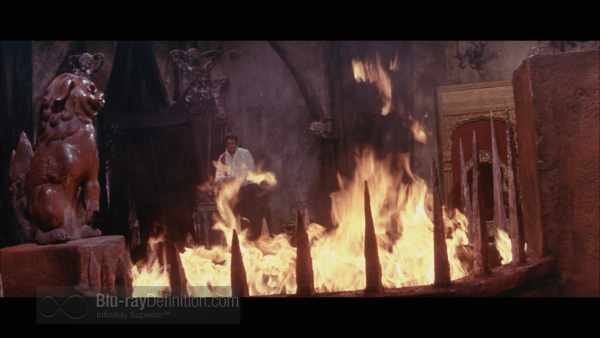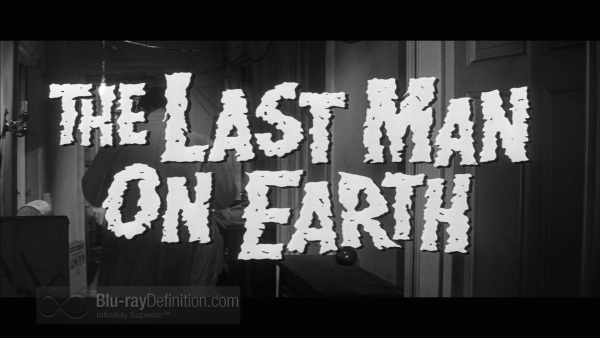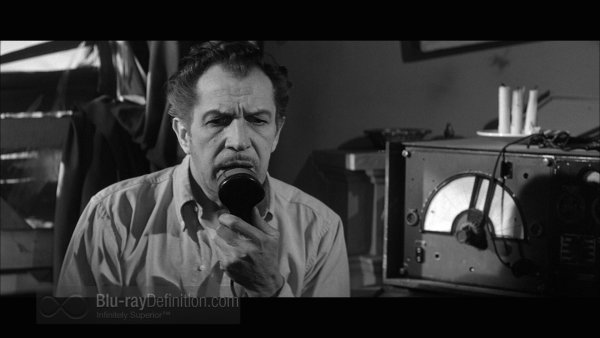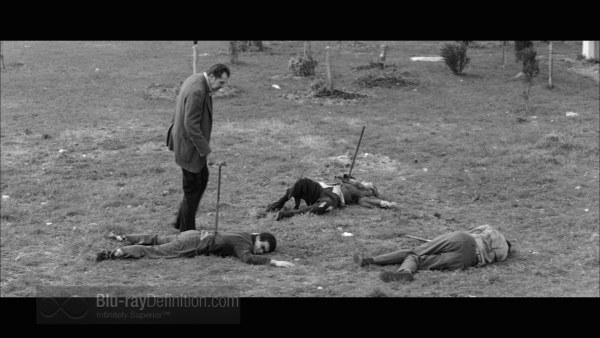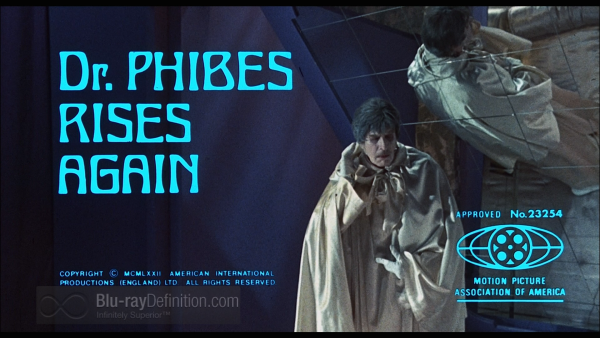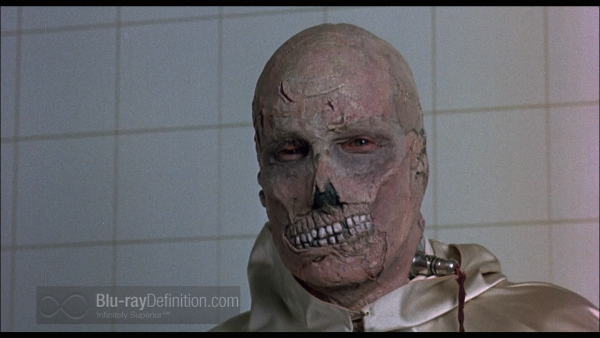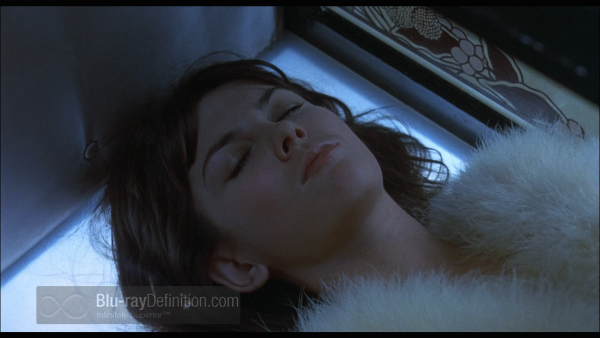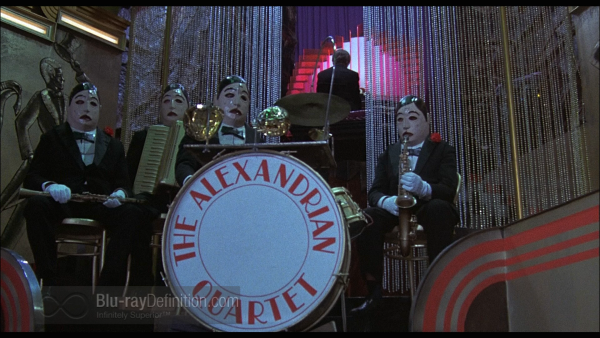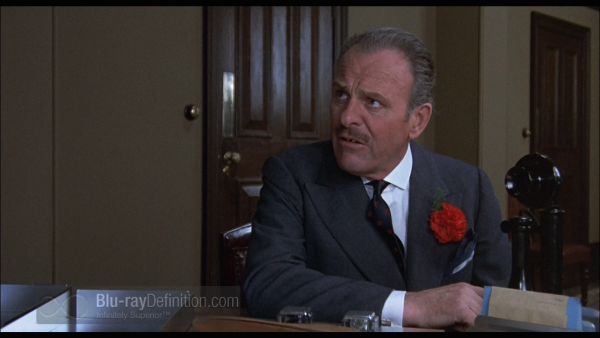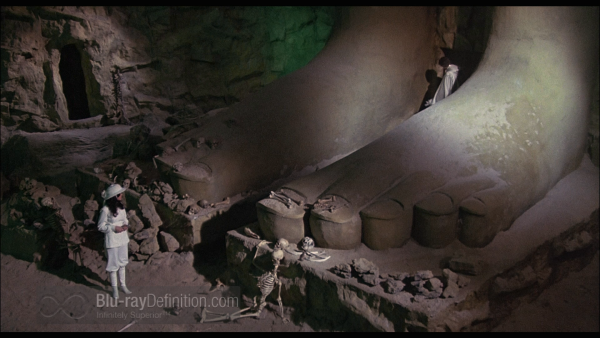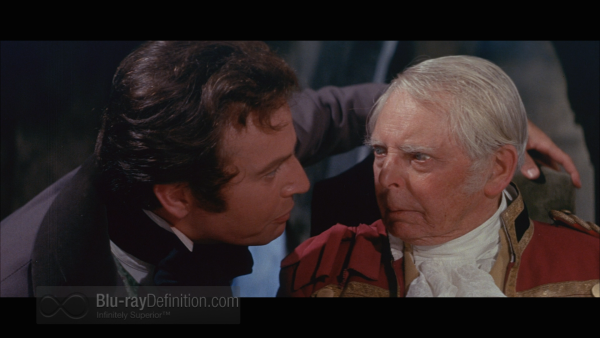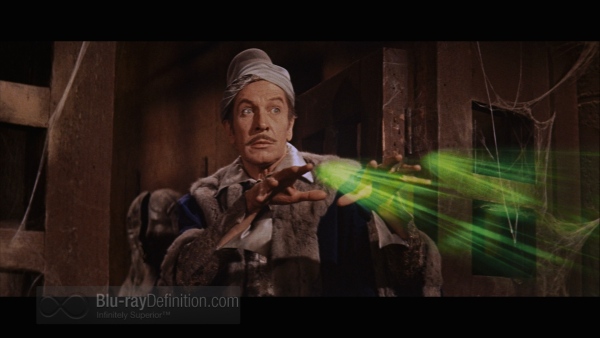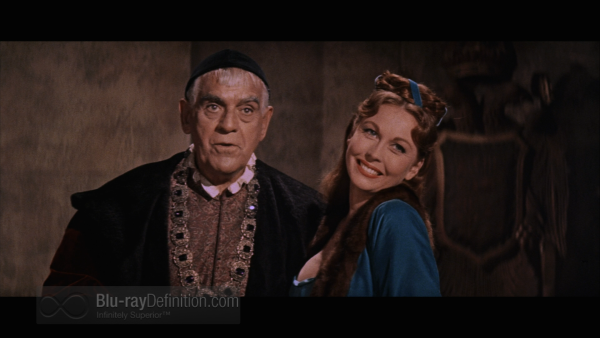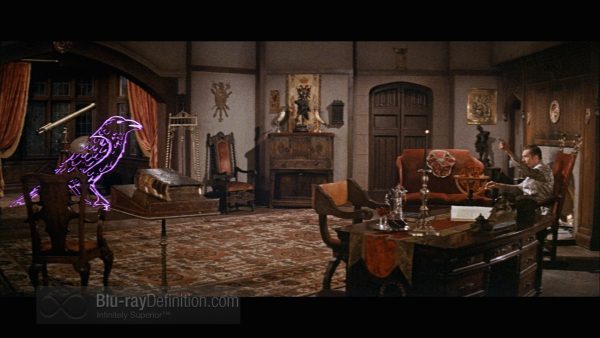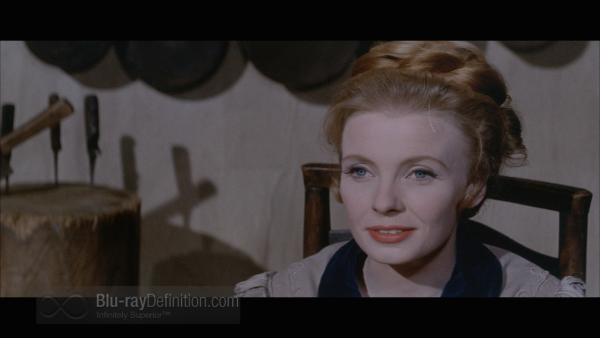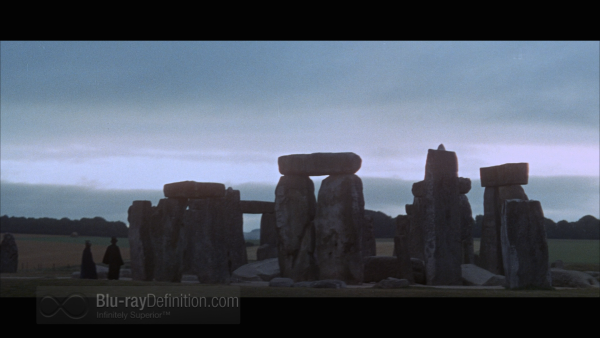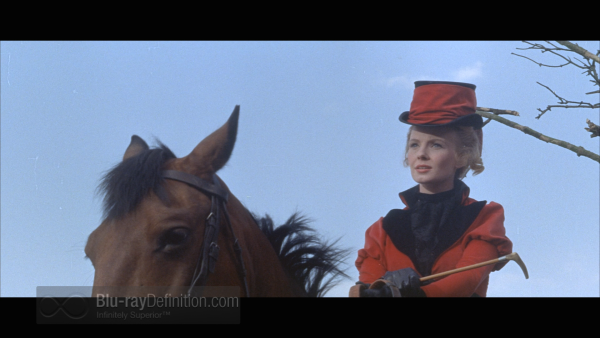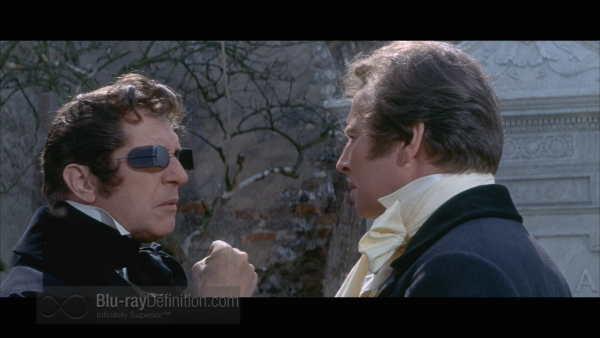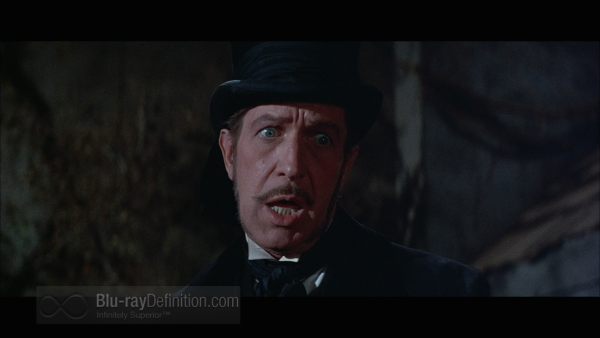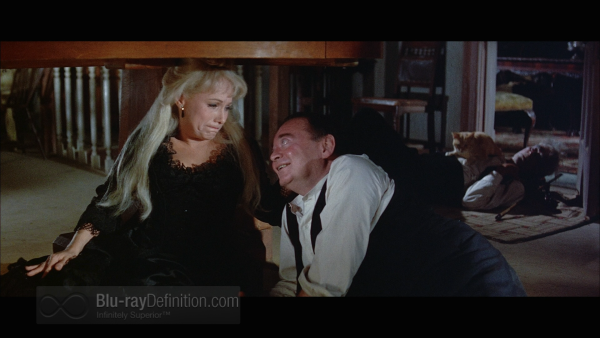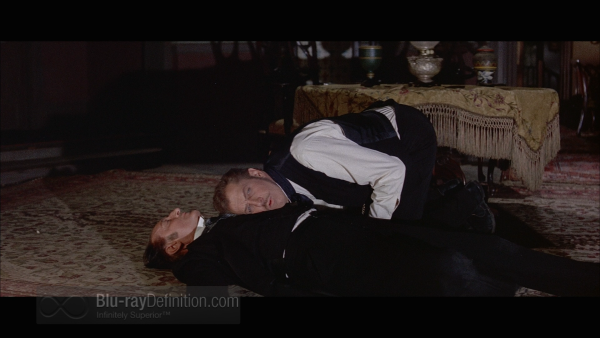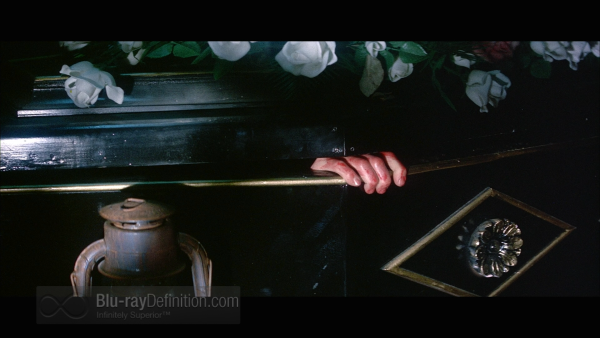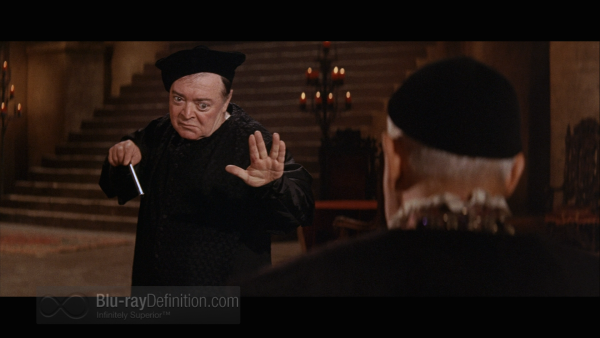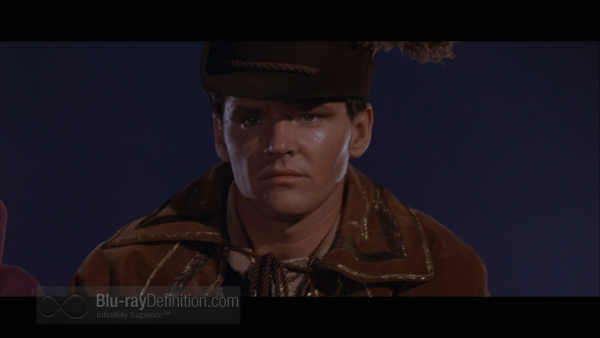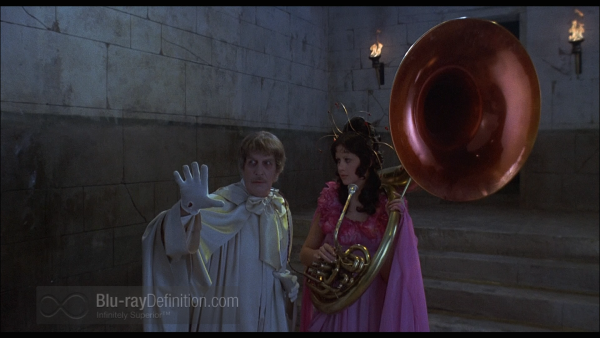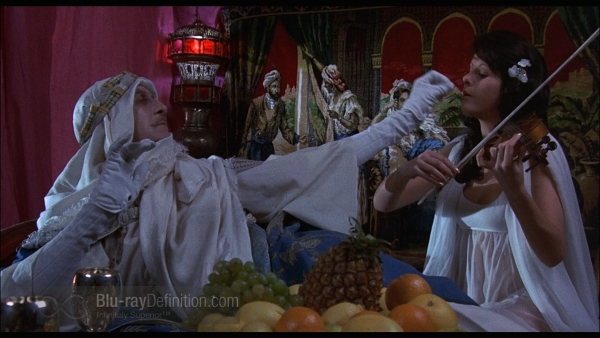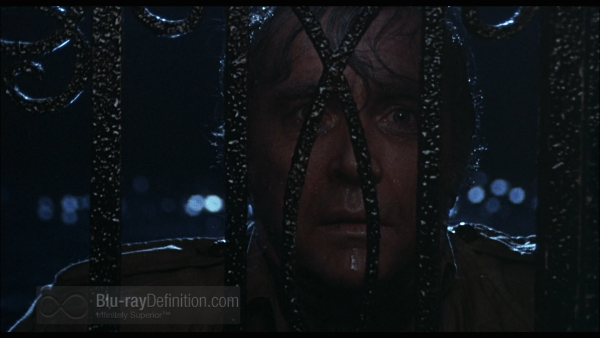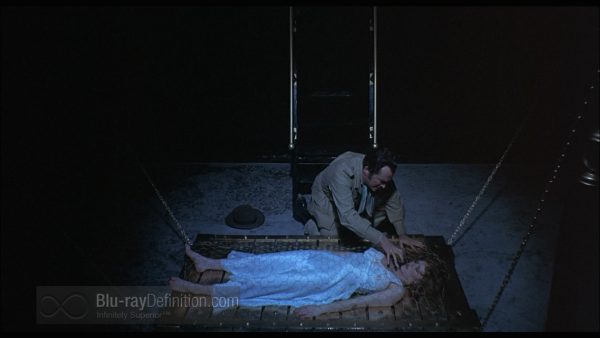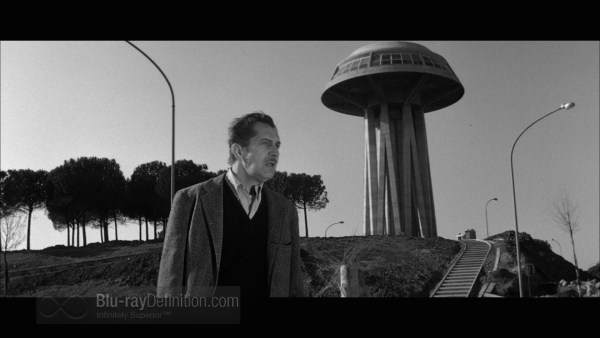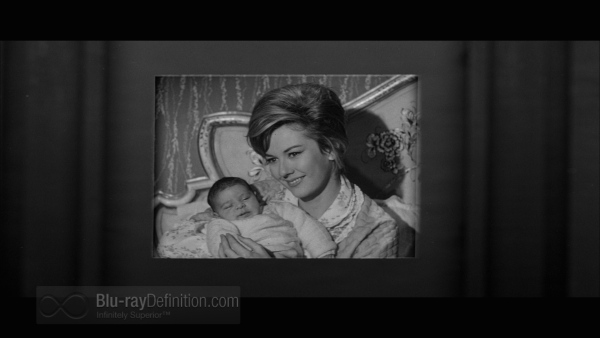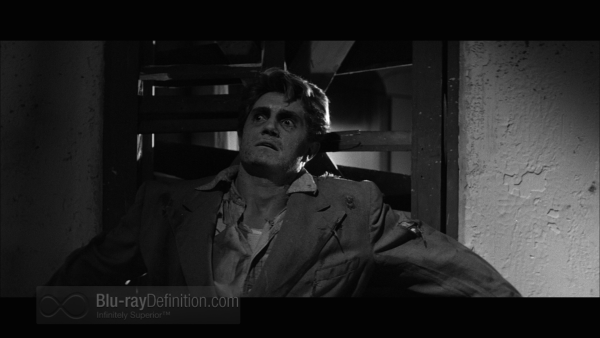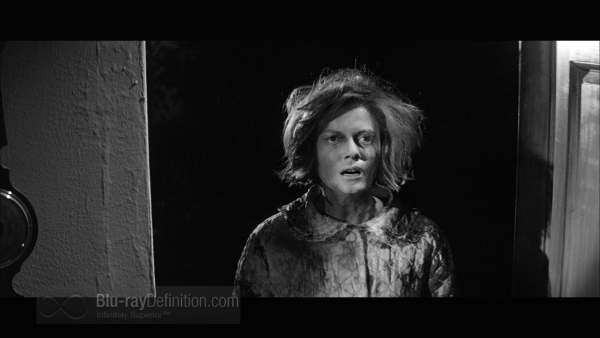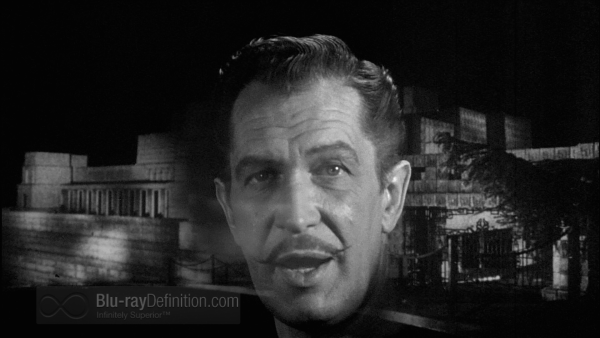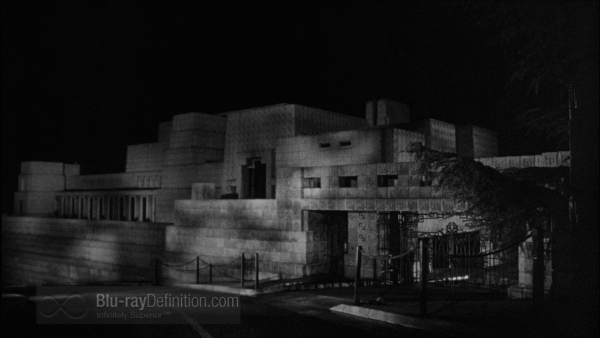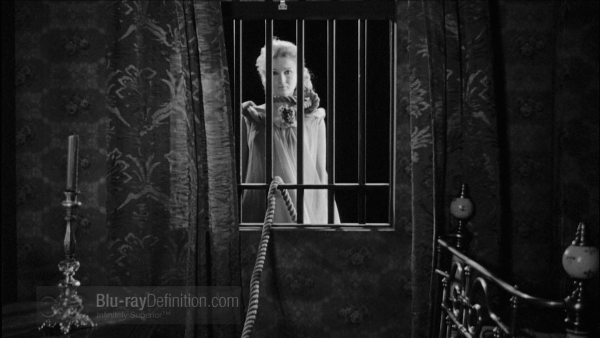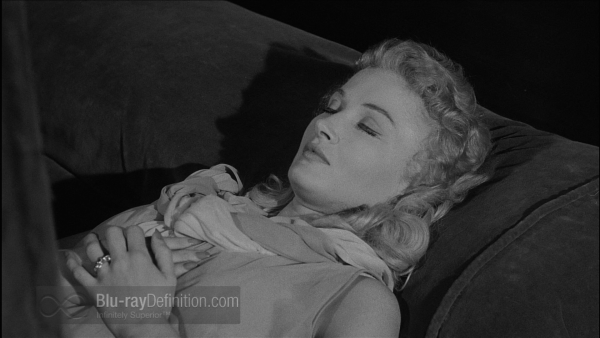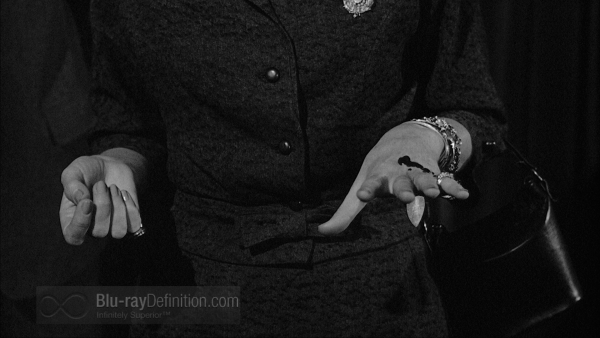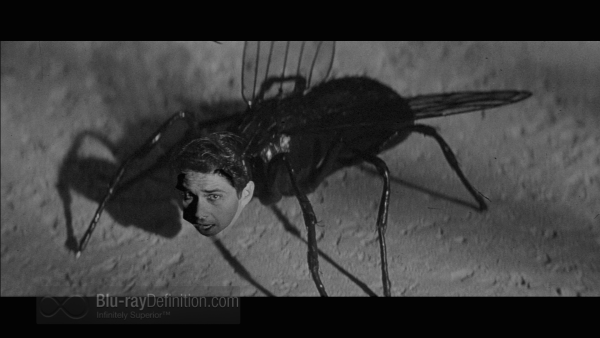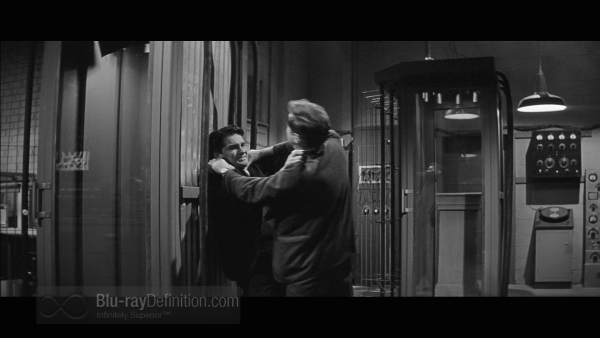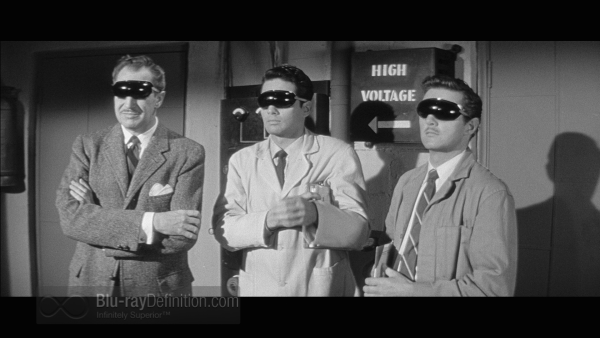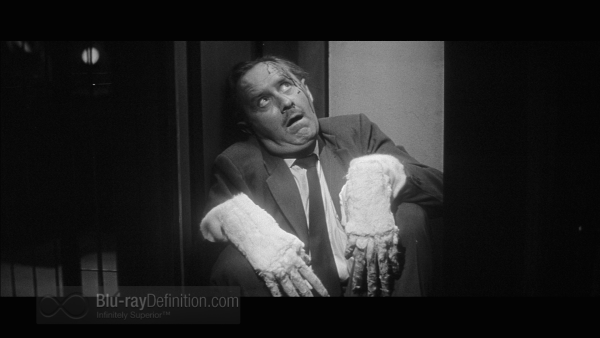– –
The Collection
[Rating:3.5/5]
Dapper character actor Vincent Price began his long career in the legitimate theater, starring in such masterpieces as Victoria Regina, but he quickly made a most successful transition to the silver screen. Beginning with The Tower of London (with long-time colleague Boris Karloff), Price gravitated toward the B-film horror genre with more than fifty such movies to his credit. The Vincent Price Collection II presents seven of his most characteristic films in their long overdue Blu-ray premieres.
The House on Haunted Hill (1959)
The House on Haunted Hill starts with a prolonged scream and some really spooky sound effects. Wealthy Frederick Loren (Price) rents an old house and invites five guests to spend the night with himself and his fourth wife Annabelle (Carol Ohmart). The guests are test pilot Lance Schroeder (Richard Long), journalist Ruth Bridges (Julie Mitchum), psychiatrist and hysteria specialist David Trent (Alan Marshall), typist(and Loren employee) Nora Manning (Carolyn Craig) and the house’s owner Watson Pritchard (Elisha Cook). Each invitee will receive $10,000 if he or she makes it through the night once the doors are locked. The house has a history of seven murders making it perfect place for haunting.
The Lorens are not happily married: Frederick is a jealous husband while Annabelle is a salacious golddigger. Pritchard takes the group on a “murder” tour of the house starting with the “acid bath” in the basement (foreshadowing, anyone?).
Frederick gives each guest the rules for the night and a loaded pistol (neatly boxed in a miniature coffin). A bit later, Lance and David find a dead Annabelle hanging in the stairwell but, of course, this is only the beginning.
In the living room and with only six hours left to go, Loren and his remaining guests hold a strategy session to determine how to address the aftermath of Annabelle’s murder. In spite of a warning that all should stay in their respective rooms, the inebriated Pritchard forecasts gloom and doom.
There is the inevitable coup de theatre moment when all of the pieces fall into place and the truth is revealed but, hey, revealing that moment would spoil the fun. A great finish to one of the most suspenseful films of its era.
Return of the Fly (1959)
This sequel to The Fly opens with the burial of Phillipe Delambre’s (Brett Halsey) mother who had been living under a cloud of suspicion related to her husband Andre’s death. Phillipe and his uncle Francois (Price) visit Andre’s laboratory. Francois explains that Andre killed himself after developing a machine to transport matter and, during a “disintegration” session, got mixed up with a housefly to become the original film’s title monster.
Phillipe begs Francois to help him but when the latter refuses, Phillipe hires Alan Hinds (David Frankham) who works at the Delambre family electronics factory. With Phillipe’s own money, they restart the teleportation project. Eventually Francois agrees to provide material assistance when Phillipe’s funds start running out.
Hinds turns out to be industrial spy Ronald Holmes who offers to steal Phillipe’s invention and sell it to crooked mortuary owner Max Barthold (Dan Seymour). The transporter is tested successfully with small animals. During a late night test session, Alan/Ronald is surprised by a British agent who has been on his trail for a previous crime. Alan overpowers the agent and then puts him in the transporter with some pretty hideous results.
Alan disposes of the agent’s body but when he returns, he is discovered by Phillipe. A fight ensues and when Phillipe is kayoed, Alan deliberately puts him in the transporter with…yikes, a fly. This sets the wheels in motion for the “Return of the Fly” with some pretty predictable results in the “like father like son” sequel with, perhaps, a more sanguine outcome.
The Comedy of Terrors (1963)
This debut of the horror triumvirate of Vincent Price, Boris Karloff, and Peter Lorre was a coup for American International Pictures. As might be expected, The Comedy of Terrors kicks off a foggy night burial and after the mourners depart, sleazy undertaker Waldo Trumbull (Price) and his assistant (and former bank robber) Felix Gillie (Lorre), dump the departed into the ground and recycle the casket.
The “happy” Trumbull household includes the somnolent old Mr. Hinchley (Karloff) former owner of the funeral parlor, and his buxom daughter Amaryllis (Joyce Jameson), now Mrs. Trumbull, who has forsaken an operatic career and locks horns with her husband on regular basis. As the death business is not booming, Trumbull must find a way to pay back rent owed to landlord Mr. John Black (Basil Rathbone).
Trumbull recruits Gillie to help generate new corpses who will need their funeral services. The pair starts with elderly Mr. Phipps (Buddy Mason) blessed with a very attractive young wife (Beverly Hills). In the ensuing “comedy of errors,” Trumbull smothers Phipps only to discover later that the grieving widow has stiffed him and made off with all of the household possessions.
The next target is Mr. Black. Trumbull and Gillie break into his house and interrupt a spirited reading of Shakespeare’s Macbeth, only to have their target die of a apparent heart attack. Black revives but conveniently dies, albeit reluctantly, again. A classic funeral follows with a spirited eulogy delivered by old Hinchley himself.
Felix and Amaryllis plan to run away together but there are snags like the resurrection of the apparently immortal Black who surprises the inebriated Trumbull, leading to an unlikely comic finish that features one of the best multiple death scenes ever with bodies littering the screen.
The Raven (1963)
This is not Edgar Allen Poe’s famous poem (although the film opens with “Once upon a midnight dreary” recited by Vincent Price). The Raven’s script was penned by Richard Matheson that pits Price as the sorcerer Dr. Erasmus Craven against evil magicians Dr. Bedlo (Petter Lorre) and Dr. Scarabus (Boris Karloff).
Dr. Craven is mourning his late wife Lenore (Hazel Court) when he receives a visit from a raven who turns out to be Dr. Bedlo, magically transformed by Dr. Scarabus. After some snappy dialogue and a visit to Craven’s basement laboratory, Dr. Bedlo is restored to normal.
Bedlo is bent on revenge and convinces Craven to visit Scarabus by telling him that he saw the doctor’s dead wife with the evil sorcerer. After a harrowing carriage ride (driven by a young Jack Nicholson as Rexford Bedlo, the magician’s son) and with daughter Estelle (Olive Sturgess) in tow, the group arrives at Scarabus Castle.
Craven and his ensemble are greeted by Scarabus himself who returns Bedlo’s magic kit but the latter’s tricks backfire. A storm rages and the Cravens and Rexford must spend the night in the castle. Dr. Craven sees his “dead” wife, very much alive, and cohabiting with Scarabus for the past two years. Craven, Rexford, Bedlo and Estelle are imprisoned by Scarabus who tries to extract Craven’s magic secrets. There is the final Scarabus-Craven sorcery duel with no holds barred and special effects galore. One can only imagine how much fun Price and Karloff must have had in filming this penultimate scene, making the blazing ending seem almost anticlimactic!
For fans of horror films, this tongue-in-cheek approach (much like that in The Comedy of Terrors) invokes all of the time-honored spoken and visual clichés that we have come to associate with this cinematic genre, underscored by Les Baxter’s quirky, amusing score.
Tomb of Ligeia (1964)
Based on an Edgar Allen Poe short story, we find Verden Fell (Price) mourning the loss of his wife Ligeia (Elizabeth Shepherd) (sound familiar?). The themes of immortality and “the cat has nine lives” are introduced at the beginning and permeate the rest of the film.
Ligeia’s tomb is discovered by Rowena Trevanion (Elizabeth Shepherd), an equestrian who just happens to be a dead ringer for the deceased women. Rowena and her boyfriend Christopher Gough (John Westbrook) meet Fell who is now compelled to wear dark glasses due to an alleged problem with light. Rowena returns to the Fell establishment where she strikes up an intense relationship with the mysterious Verden.
There is a concatenation of symbols of the living and the dead that blurs the distinction between these two worlds. Verden Fell is convinced that Ligeia will return from the beyond and after a whirlwind courtship, he marries Rowena but all is not well. The settling of the estate and most of Fell’s resources remain tied up in Ligeia’s name. Moreover, the groom seems conspicuously derelict in the execution of his marital obligations.
Some leger-de-main later, and another appearance of the cat whom we have now guessed is Ligeia’s spirit that must be reckoned with, we get the fiery climax to this rather liberal adaptation of the Poe classic.
The Last Man on Earth (1964)
In a departure from the usual American International horror films, this one comes from Italy. Dr. Richard Morgan has become a vampire-killer in a world where every human being has been infected by a virus that transforms them into the undead. We have seen this script since recycled as The Omega Man (Charlton Heston) and I Am Legend (Will Smith).
Vampires cannot stand sunlight, garlic or mirrors and have lost their human intellect, so they become easy prey for Dr. Morgan during the day. However, at night, Morgan must lock himself inside for safekeeping and to prepare for day-to-day survival, securing gasoline, garlic, and other provisions.
Morgan, losing his battle against time, finds a friendly stray dog who eventually dies from the plague. As he is burying the animal, he encounters a young girl, Ruth Collins (Franca Bettoia) who moves in with him but it does not bode well when she exhibits an adverse reaction to garlic.
As Morgan discovers the truth about his immunity and that there are no other options, he works on a solution to cure vampirism with the use of his own antibodies. In a whirlwind ending, we get the ultimate answer to man’s inhumanity to man.
Dr. Phibes Rises Again (1972)
A sequel to The Abominable Dr. Phibes in which Phibes exacts brutal revenge on the nine physicians that he believed responsible for his wife Victoria’s (Caroline Munro) death, this film finds Anton Phibes (Vincent Price) returning from the “dead.”
It is now three years later, and Dr. Phibes leaves his basement mausoleum shared with his late wife. Due to a self-inflicted destruction of his face, Dr. Phibes must were a prosthesis and speak through a bizarre artificial larynx. He plans to resurrect Victoria with the assistance of Vulnavia (Valli Kemp). Original papyrus scrolls showing the location of Pharaoh’s tomb and the River of Life, hold the key to Victoria’s resurrection. But Darius Biederbeck (Robert Quarry), himself several hundred years old, his saucy girlfriend Diana (Fiona Lewis) and Harry Ambrose (Hugh Griffith) have their sights set on Egypt as well with ulterior motives, the former for eternal life, and the latter two for gold.
For comic relief, we get Inspector Trout (Peter Jeffrey) who is investigating the Phibes-related murder of Harry Ambrose and the brief injection of Terry Thomas, one of the great ‘70s comedic film actors, as detective Lombardo. Lombardo begins connecting the dots that links Phibes to the crime. Miss Ambrose (Beryl Reid), Harry’s cousin shows up to assist the investigation.
Phibes’s monomaniacal mission to bring his wife back to life continues in a race against time and the Biederbeck team with Trout and Superintendent Waverley (John Cater) in hot pursuit. The protagonists reunite in Ancient Egypt with some terrific blood and gore, orchestrated by Phibes and company. In the spirit of avoiding a spoiler alert, you just don’t mess with Dr. Phibes.
Video Quality
[Rating:3.5/5]
The decade-plus covered by these seven films shows a rather consistent visual presentation with gradual improvement over time. The four color films had surprisingly good color palettes and clarity while their three black-and-white counterparts were quite sharp with excellent contrast. Bits of grain and the occasional blur aside, each of these films looks quite good for its vintage even if some of the special effects, as in The Raven and Dr. Phibes Rises Again look somewhat hokey when compared with what today’s CGI wizards can do.
Audio Quality
[Rating:4/5]
All of the soundtracks are uncompressed DTS-HD Master Audio 1.0. There is a boxy quality to most of them that is less obvious in the most recent films. Dialogue is clear and the often-creepy music soundtracks are quite listenable.
Supplemental Materials
[Rating:4/5]
There is a very nice souvenir booklet with a background piece on Price and the films, replete with still shots and movie posters. A generous list of extras follow:
The House on Haunted Hill:
- Theatrical Trailer
- Vincent Price: Renaissance Man (English DTS-HD Master Audio Stereo, 48kHz/24-bit) (27:20): Richard Squires provides a nice film biography of the actor.
- The Art of Fear (English DTS-HD Master Audio Stereo, 48kHz/24-bit) (12:13) : film critics and historians recall the Vincent Price film archive.
- Working with Vincent Price (English DTS-HD Master Audio Stereo, 48kHz/24-bit) (15:26): retrospective views on the terrific colleague that Price was.
- Introductory Price: Undertaking the Vincent Price Gothic Horrors (English DTS-HD Master Audio Stereo, 48kHz/24-bit) (13:16): A featurette on Vincent Price’s film wraparounds for Iowa Public Television.
- Still Gallery
- The Vincent Price Collection (English DTS-HD Master Audio Stereo, 48kHz/24-bit) (19:27): Trailers for House of Wax, The Conqueror Worm, The Abominable Dr. Phibes, House of Usher, The Haunted Palace, The Masque of the Red Death, The Pit and the Pendulum.
Return of the Fly
- Theatrical Trailer and TV Spot
- Still Gallery
The Comedy of Terrors
- Introduction and parting words by Vincent Price (English Dolby Digital Stereo, 48kHz/16-bit): (5:40)
- Richard Matheson Storyteller: THE COMEDY OF TERRORS (English Dolby Digital Stereo, 48kHz/16-bit) (6:37): a brief feature on Matheson’s script, narrated by the writer himself.
- Still Gallery
- Theatrical Trailer
The Raven
- Introduction and parting words by Vincent Price (English Dolby Digital Stereo, 48kHz/16-bit): 5:00
- New Audio Commentary with author/film historian Stever Haberman
- Richard Matheson Storyteller: THE RAVEN (English Dolby Digital Stereo, 48kHz/16-bit) (6:37): a brief feature on Matheson’s script, narrated by the writer himself.
- Corman’s Comedy of Poe (English Dolby Digital Stereo, 48kHz/16-bit) (8:13): Producer/director Roger Corman describes the genesis of the film and the decision to make it a comedy.
- Promotional Record (English Dolby Digital Stereo, 48kHz/16-bit) (5:41)
- Trailer
- Still Gallery
The Tomb of Ligeia
- Introduction and parting words by Vincent Price (English Dolby Digital Stereo, 48kHz/16-bit): 5:00
- Theatrical Trailer
- Still Gallery
The Last Man on Earth
- Richard Matheson Storyteller: The Last Man on Earth (English Dolby Digital Stereo 48kHz/16-bit) (10:15) : a 2014 must-watch visual essay about the writer/diretor by film scholar James Quandt career
- Still Gallery
Dr. Phibes Rises Again
- Theatrical Trailer
- Still Gallery
The Definitive Word
Overall:
[Rating:3.5/5]
B-movies (as most of these films obviously are) can still be fun to watch and this is most assuredly the case with The Vincent Price Collection II. With the exception of The House on Haunted Hill that was well-received on its initial release, the remaining films in this set vary in quality with the least effective being The Tomb of Ligeia and Return of the Fly. But even this pair has some redeeming moments. The tongue-in-cheek campy trio, The Comedy of Terror, The Raven, and Dr. Phibes Rises Again are great examples of how to make horror films that will tickle your respective funny bones. With excellent restorations and passable sound, this set will certainly please those who enjoy horror and fright films in a darkened room with plenty of pop corn and tasty beverages.
Additional Screen Captures
[amazon-product]B00LMBURV8[/amazon-product]
[amazon-product]B00LMBURV8[/amazon-product]


